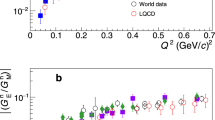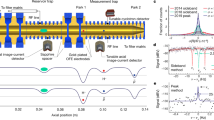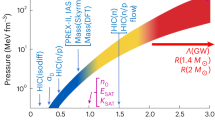Abstract
IT has recently been suggested by Bondi and Ly ttleton1,2 that the magnitudes of the electric charges on the proton and electron may differ by a little more than one part in 1018, in which case electrostatic forces would cause the universe to expand. In fact, Piccard and Kessler3 attempted to detect such a difference in 1925, and found that a molecule of carbon dioxide did not have an electric charge greater than 2×10−19 e, where —e is the electronic charge, from which they concluded that the magnitudes of the proton and electron charges were the same to within 5 parts in 1021, assuming that matter was built entirely of protons and electrons. Since matter also contains neutrons, they have assumed in effect that the neutron has a charge equal to that of a hydrogen atom; but the neutron might equally well have a charge opposite to that of a hydrogen atom, in which case their experiment does not settle the point at issue, since carbon dioxide contains equal numbers of protons and neutrons (to within 0.1 per cent). It therefore seemed desirable to find whether matter in which there is an excess of neutrons is electrically neutral. We have found that the charge on an argon atom (18 protons, 18 electrons and 22 neutrons) is not greater than 8×10−20 e and that on a nitrogen molecule (14 protons, 14 electrons and 14 neutrons) is not greater than 12 × 10−20 e. Treating the charges on nitrogen and argon as the sums of charges on protons, electrons and neutrons, it is deduced that the proton charge is (1±4×10−20)e and the charge on the neutron is less than 4 × −20 e.
This is a preview of subscription content, access via your institution
Access options
Subscribe to this journal
Receive 51 print issues and online access
$199.00 per year
only $3.90 per issue
Buy this article
- Purchase on Springer Link
- Instant access to full article PDF
Prices may be subject to local taxes which are calculated during checkout
Similar content being viewed by others
References
Manchester Guardian, May 13, 1959.
Proc. Roy. Soc. (in the press).
Piccard, A., and Kessler, E., Arch. Sci. Phys. et Naturelles, 7, 340 (1925).
Author information
Authors and Affiliations
Rights and permissions
About this article
Cite this article
HILLAS, A., CRANSHAW, T. A Comparison of the Charges of the Electron, Proton and Neutron. Nature 184, 892–893 (1959). https://doi.org/10.1038/184892a0
Issue Date:
DOI: https://doi.org/10.1038/184892a0
This article is cited by
-
Millicharged particles from the heavens: single- and multiple-scattering signatures
Journal of High Energy Physics (2021)
-
The electrical neutrality of atoms
Zeitschrift f�r Physik D Atoms, Molecules and Clusters (1988)
-
The equivalence of charge and energy
Lettere Al Nuovo Cimento Series 2 (1973)
-
An upper limit to the existence of charges (2/3)e in the cosmic radiation at 500 m above sea level
Il Nuovo Cimento A (1965)
-
Comparison of the Charges of the Electron, Proton and Neutron
Nature (1960)
Comments
By submitting a comment you agree to abide by our Terms and Community Guidelines. If you find something abusive or that does not comply with our terms or guidelines please flag it as inappropriate.



